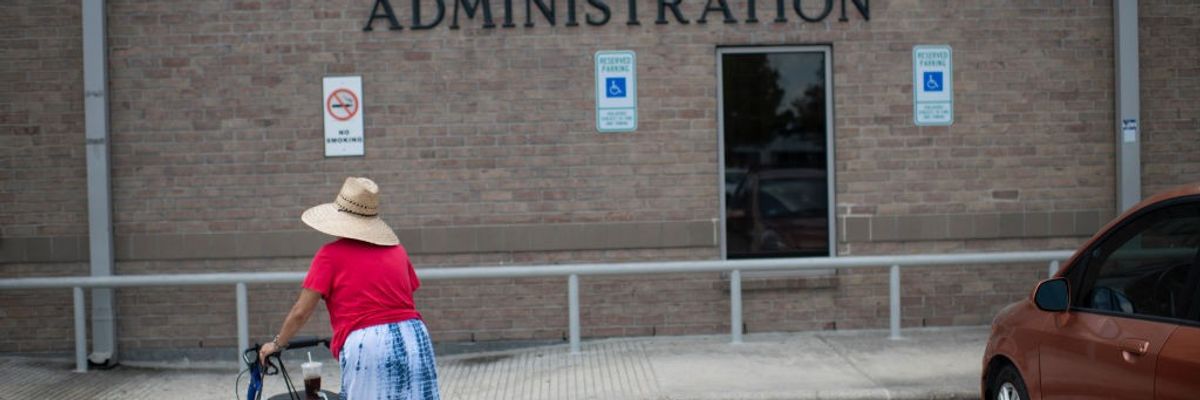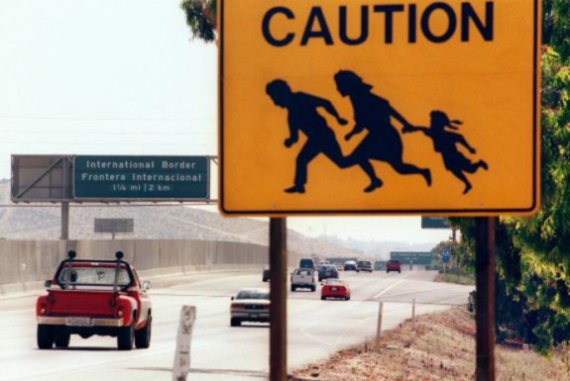The legendary Venezuelan leader died 10 years ago today
Owen Schalk / March 5, 2023

Hugo Chávez in uniform, 2010.
While ten years without Chávez has brought innumerable challenges to Venezuela (many of which still persist) it is evident that even without the singularly charismatic persona of El Comandante at the helm, the future envisioned by the Bolivarian Revolution—one of socialism, anti-imperialism, and communal production—remains a tremendous threat to US hegemony in the hemisphere.
Revolutionary, educator, president
Hugo Chávez was a deeply impressive leader whose political adroitness, mediatic skill, and commitment to radical new visions of democracy have not been equalled in the hemisphere since he assumed the presidency in 1999. Not since Fidel Castro came to power in 1959 had a Latin American head of state combined the qualities of president, revolutionary, and popular educator so seamlessly—a uniqueness that most Venezuelans admired, as evidenced by the vote shares in every presidential election he contested (he won 56 percent of votes in 1998, 60 percent in 2000, 63 percent in 2006, and 55 percent in 2012).
In his widely viewed Aló Presidente broadcasts, Chávez worked to educate the population about democracy, communes, socialism, and more. Asserting that “it is impossible to have a revolution without revolutionary theory,” Chávez inaugurated a new series in 2009 called Aló Presidente Teórico in which he hosted discussions on socialist transition, guiding the broadcasts using wide-ranging references including Simón Bolívar, Karl Marx, István Mészáros, and José Carlos Mariátegui.
Unsurprisingly, Chávez was a lightning rod for the hatred of Venezuela’s traditional ruling class. A man from a poor family and an Indigenous and Afro-Venezuelan background, his enormous popularity provoked an existential crisis of sorts in the Venezuelan oligarchy that continues to this day. They demeaned him, degraded his supporters, and fear-mongered about his supposedly dictatorial aspirations. Often their attacks were overtly racist.
In 2005, Chávez stated, “Racism is very characteristic of imperialism and capitalism. Hate against me has a lot to do with racism. Because of my big mouth and curly hair. And I’m so proud to have this mouth and this hair, because it is African.”
Officials in Washington shared the Venezuelan opposition’s hatred for Chávez. Their anti-socialist alliance culminated in a failed coup d’état by the Venezuelan oligarchy in April 2002. The coup was supported by the George W. Bush administration.
During their two days in power, the right-wing opposition acted with the flagrant aversion to democracy of which they constantly accused Chávez, dissolving the National Assembly and Supreme Court, dismissing Chávez appointees, suspending all governors and mayors elected during Chávez’s time in power, and voiding the 1999 constitution, which was approved by popular referendum with 72 percent support.
Fortunately for Venezuelan democracy, supporters of the Bolivarian Revolution took to the streets in such force that the military returned Chávez to the presidency. Population mobilization would also be key in opposing the 2002-2003 opposition oil lockout and the failed 2004 recall referendum against Chávez.
The Bolivarian Revolution endures
With Chávez gone and a terrible economic crisis roiling Venezuela, the Bolivarian Revolution under Nicolás Maduro continued to triumph in most major elections, with Maduro winning the presidential vote in 2013 and 2018, despite the opposition’s victory in 2015 parliamentary elections.
The Bolivarian Revolution continued to triumph even as left-wing political projects across Latin America fell one by one to a resurgent right. Honduran president Manuel Zelaya was removed in a military coup backed by the US and Canada in 2009. Embittered elites in Paraguay used a conflict over peasant land rights to remove President Fernando Lugo in 2012. Brazilian president Dilma Rousseff fell to a US-backed lawfare campaign in 2016. The Bolivian right-wing led a coup against Evo Morales after he won the 2019 presidential election, leading to one year of dictatorial right-wing rule characterized by massacres of pro-Evo protestors and the persecution of MAS supporters.
Despite some significant gains including the overturning of Bolivia’s right-wing coup in 2020 and the victory of Lula da Silva in Brazil’s 2022 election, the Latin American left remains on its back foot. In Argentina, the popular left-leaning politician Cristina Fernández de Kirchner has faced a lawfare campaign aimed at preventing her from running for president, an election she would likely win. Former Ecuadorean president Rafael Correa remains locked out of his country’s politics by the governing conservatives (although local elections bode well for the future prospects of the left in Ecuador). And the elected president of Peru, the socialist-oriented Pedro Castillo, was recently deposed by congress in what most Peruvians recognize as a coup.
But through all this regional turbulence, plus the growing strength of opposition attacks during Maduro’s tenure, the Bolivarian Revolution persists in Venezuela. Why? Venezuelan journalist Clodovaldo Hernández identifies several important reasons:By prioritizing the passage of a new, participatory constitution in 1999, Chávez was quickly able to sideline the Venezuelan right and place more power in the hands of the population, “allow[ing] the Bolivarian Revolution to armour itself against the typical conspiracies of the recently displaced elites.”
The revolution’s progressive policies, including in the areas of literacy, housing, health care, and land reform, have led to a large degree of popular support, even in the midst of economic crisis. “Without this popular support,” Hernández writes, “the imperialist forces and the domestic right wing would have long ago achieved their goal of destroying the Venezuelan revolutionary process.”
The strength of Chávez’s leadership and his national prestige as an individual.
Chávez reworked Venezuela’s military doctrine and reformed the armed forces to reduce the influence of the United States through its training facilities like the notorious School of the Americas. This “civic-military alliance” foreclosed the possibility of another coup.
The revolution recognized the importance of the domestic media war and encouraged the organization of popular media as a way to break the information stranglehold of large news companies, which were uniformly against Chávez.
Despite having “almost unanimous support from the conglomerate of global capitalism,” the Venezuelan opposition remains a clumsy and schismatic coalition that has proven unable to fundamentally challenge the revolution.

A billboard of Hugo Chávez’s eyes and signature in Guarenas, Venezuela.
“Not a one-man show”
When examining the successes of the Bolivarian Revolution, and potential explanations for its endurance, one topic we must take seriously is Chávez’s commitment to a communal future. The Venezuelan communes, often ignored in North American media coverage, represent the backbone of the revolutionary process and one of the most militant, organized, and politically conscious socialist assemblages in the Western Hemisphere.
Chávez himself described communes as “the space from which we give birth to socialism” and the cellular tissue of the Bolivarian Revolution. However, the movement toward local autonomy and worker self-management had been developing for decades before Chávez.
Since at least the 1980s, the traditional political parties in Venezuela had been discredited, and when the state dispatched security forces to massacre hundreds (possibly thousands) of protestors during the Caracazo, the liberal model of representative democracy revealed itself as the velvet glove around the iron fist of capitalism.
The “rejection of the logic of representation,” as Dario Azzellini calls it in Communes and Workers’ Control in Venezuela: Building 21st Century Socialism from Below, caused the goals of the popular movements to crystallize into “self-determination, self-management, and constituent power,” as well as “direct democracy, expressed in the [1999] Constitution as ‘participatory and protagonistic democracy.’” By aligning himself with these pre-existing forces and empowering them through his progressive reforms, Chávez was able to earn the revolution a key ally against the opposition’s assaults.
Due to the often fraught alliance between the state and these grassroots organizations, the Bolivarian Revolution has never been a process dictated by centralized authority. Azzellini characterizes the socialist transition in Venezuela as one of “two-track construction”:
We are speaking of a new way, unheard of in previous struggles and strategies for social transformation, that combines concepts ‘from above’ and ‘from below’ to pursue an anti-imperialist politics of national sovereignty. In this process, the state and its institutions are strengthened, and follow a strategy of active regulation of economic process in a mixed (capitalist) economy. On the other hand, according to the declared normative orientation, movements must assume the central role in the process of change and must have autonomy.
Azzellini adds that the persistence of the Bolivarian Revolution since 2013 proves that it is “a solid transformation project and not a one-man show based on populism.” Rather, it embodies a dynamic alliance (and occasional opposition) between multiple forces, the primary ones being the Chavistas in the state and the comuneros outside of it.
Towards a communal state
Of central importance to the ongoing revolutionary process is the idea of the communal state. The Organic Law of Communes, passed by the National Assembly in 2006, defines the communal state as a “form of social political organization… in which power is exercised directly by the pueblo, by means of communal self-governments with an economic model of social property and endogenous and sustainable development.” The commune is defined as “the basic structural cell of the communal state.”
The theorization of a communal state has a long history in Venezuela. As George Ciccariello-Maher points out in Building the Commune: Radical Democracy in Venezuela:
It was no coincidence that those who fought against colonial rule and slavery from the very beginning often did so by building communal societies beyond Spanish control, from indigenous communities to the cumbe communities founded by runaway slaves. It is likewise no coincidence that those who today draw upon their inspiration continue to pioneer new forms of communal living and collective production that are compatible with older traditions, showing the ways that this new communal culture—by emphasizing local sustainability over consumerism—is also deeply anticolonial.
When Chávez described the importance of communes in 2007, one of the influences he borrowed from was Simón Rodríguez, an influential teacher of national hero Simón Bolívar. Rodríguez, who lived from 1769 to 1854, “urged the destruction of the existing religious and military powers dominating Venezuela” and the creation of a “toparchy,” or a form of “decentralized local rule” comprised of “small, self-governing units.”
Reinaldo Iturizza, the former Minister of Communes and a strong champion of the communal state, has described Venezuela’s transition to socialism as “toparchic,” indicating the influence of Rodríguez’s thought on communal politics today.
Kléber Ramírez was another influence on the notion of the communal state. Ramírez worked with Chávez during the planning of the failed 1992 coup against neoliberal President Carlos Andrés Pérez. His role was to draft the political documents that would form the basis of the new government if the coup succeeded. In this position, he emphasized the importance of constructing a “commoner state” in Venezuela, which would mean a “broadening of democracy in which the communities will assume the fundamental powers of the state.”
Ramírez described the commoner state as a “government of popular insurgency,” stressing the dialectical relationship between the state and the movements, between those “above” and those “below,” in transforming bourgeois rule into the rule of communality. Needless to say, Ramírez’s idea of the commoner state bears a striking resemblance to the two-track character of the communal state put forward by the Chávez government from 2006 onward.
Chávez lives
As Vijay Prashad wrote in a recent Tricontinental Institute newsletter, Chávez is still very present in Venezuela. His images are ubiquitous in barrios, poor neighbourhoods, and the communes that were the central tenet of his political philosophy.
“[T]he legacy of Chávez was not in his own life,” writes Prashad, “but in the difficult work of building socialism.”
While Chávez’s idea of the communal state was deeply rooted in Venezuelan history, it is certainly a theory that is applicable to life elsewhere. In North America, examples of communal living abound in the cultures of Indigenous peoples, the Métis, and some settler groups.
For many, modern life in Canada and the US may feel socially atomized, thoughtlessly technologized, and politically hopeless. But these ideas of communality can be reclaimed, expanded, knitted into global struggles. In this process, the Venezuelan vision of a communal future is one of many guides.
Even though Hugo Chávez is in his grave, he remains a revolutionary thinker and a popular educator. In his speeches, his writings, and his theories of popular empowerment, Chávez lives.
Owen Schalk is a writer based in Winnipeg. He is primarily interested in applying theories of imperialism, neocolonialism, and underdevelopment to global capitalism and Canada’s role therein. Visit his website at www.owenschalk.com.









